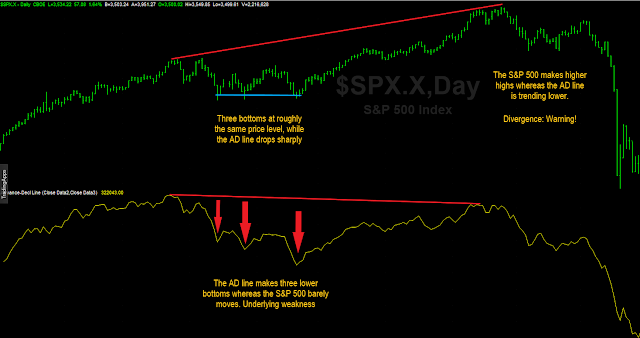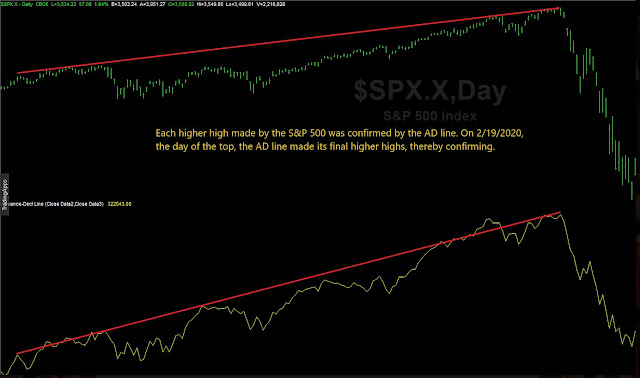As promised yesterday, I am reproducing and updating
one post I penned two years ago comparing the 1987 and 2020 stock market
crashes.
Yesterday, October 19th was the 35th anniversary of the 1987 stock market crash. I wrote about it in the past and made clear that the Dow Theory (of any flavor whatsoever) could get investors out of stocks before the big decline set in.
The Dow Theory for the 21st Century (what I affectionately call “Schannep’s Dow Theory) called the turn three days before the Classical Dow Theory did, as the Industrials broke down below their September 21st, 1987 secondary reaction lows on October 9th, whereas the S&P 500 did so on October 12th. Since we need the S&P 500 plus one other index to declare a primary bear market, on October 12th (S&P 500 at 309.39), Schannep’s Dow Theory proclaimed that the writing was on the wall. On the other hand, the “original” Dow Theory, which does not have the S&P 500, and needs the Transports to confirm, had to wait until October 15th (S&P 500 at 298.08) when the Transports finally deigned to break down below their September 21st lows. The S&P 500 made its closing highs on August 25th, 1987, at 336.77. So the total loss for Schannep’s Dow Theory was a well-contained loss of -8.13% for those trading the S&P 500.
However, the goal of this post is not to boast about past successes but to compare the 1987 to the 2020 crashes from a technical perspective.
Similarities:
- Both bear markets dropped in a free fall.
- While the 2020 “crash”
recovery has been quicker (roughly six months for the S&P to make new
all-time highs), the 1987 crash managed to make higher highs in ca. 23 months.
It was not like that in the 1929 crash. Soothsayers (I keep one notable name
for myself) who predicted a prolonged bear market were proven wrong (both in
1987 and 2020).
- The total loss from peak to trough has been similar for the two crashes. The S&P 500 declined from a high of 366.77 (August 25th, 1987) to a low of 223.91 (December 14th, 1987), for a total decline of -38.95%. In the most recent crash, the S&P 500 declined from a high of 3386.15 (February 19th, 2020) to a low of 2,237.40 (March 23rd, 2020), a total decline of -33.92%.
However, there is a significant discrepancy between the two bear markets. The attentive analyst could see the 1987 crash (or at least a very severe correction) brewing, as there were many warnings, both technical and, for those with this inclination, fundamental or value-based.
I’ll focus on one of my pet indicators, which has stood the test of time when applied in proper context. The Advance/Decline line. For an accurate description of this line, go to investopedia. In essence, the advance decline line keeps a cumulative record of the difference between advancing and declining issues. A rally with a declining AD line implies poor following and tends to be a technical warning.
As you can see in the chart below, the AD line gave several warnings about the underlying weakness of the then-existing primary bull market.

Anatomy of the 1987 crash: The AD line gave ample warning
However, the situation was different in the months leading to the February-March 2020 crash. While I will not clutter this post with charts, neither the 52 Weeks highs, the VIX, nor any other indicators warned in advance about the incoming bear market.
Here you have a chart of the S&P 500 and the AD line. As you can see, the AD line confirmed higher highs made by the S&P 500. So, nothing in the AD line suggested underlying weakness.
Anatomy of February-March 2020: The AD line did not give any warnings
This is why it is essential to honor your Dow Theory-based stop-losses. While background information may be helpful in some specific instances (i.e., in 2007 when weakness in the Transports advocated against being long), we cannot second-guess a primary bear market signal. As traders say: “The first loss is the best loss.”
Sincerely,
Manuel Blay
Editor of thedowtheory.com

No comments:
Post a Comment